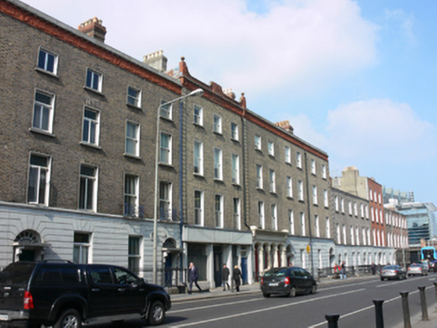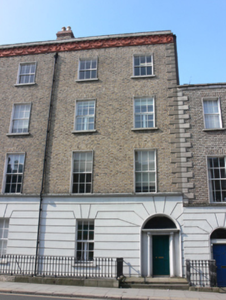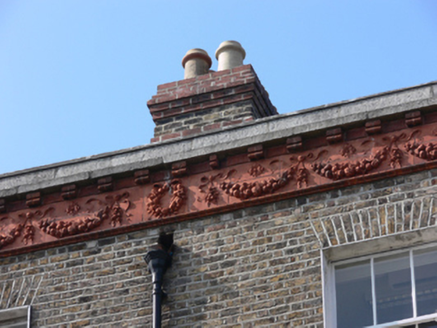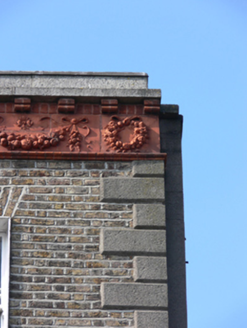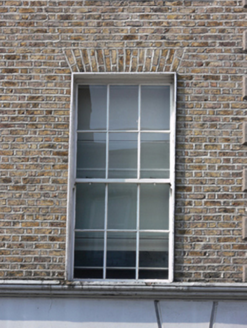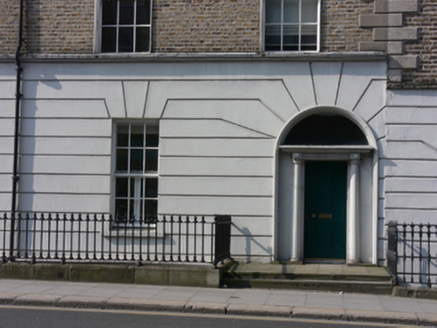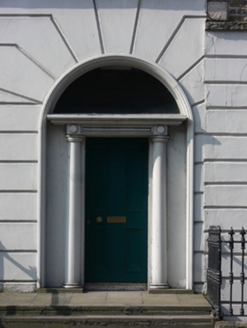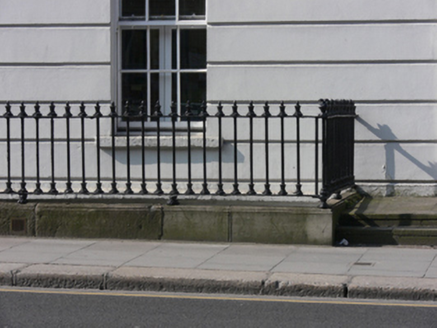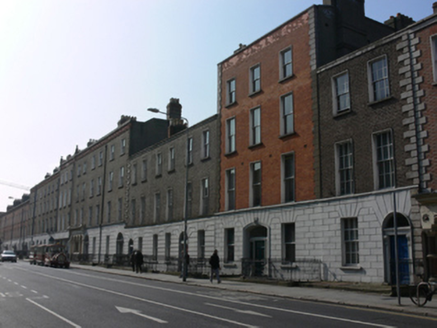Survey Data
Reg No
50020433
Rating
Regional
Categories of Special Interest
Architectural, Artistic, Social
Original Use
House
In Use As
Building misc
Date
1820 - 1840
Coordinates
316590, 233937
Date Recorded
18/03/2015
Date Updated
--/--/--
Description
Terraced two-bay four-storey over basement former house, built c.1830, now in use as part of college. M-profile pitched slate roof, hipped to north to rear (west) elevation, with brown and red brick chimneystacks having clay pots, and cast-iron rainwater goods, concealed behind brick parapet with ashlar granite coping and terracotta frieze having swag-and-wreath detail. Yellow brick, laid in Flemish bond, to wall to front, with rusticated granite quoins, channelled render to ground floor, painted masonry plinth course over smooth rendered wall to basement, lined-and-ruled render to north elevation. Square-headed window openings having three-over-three and six-over-six pane timber sliding sash windows with raised render reveals and granite sills, moulded masonry sill course to first floor. Round-headed door opening having moulded masonry surround, masonry doorcase comprising Doric columns and entablature, timber panelled door, plain fanlight. Masonry steps with granite kerbing. Cast-iron railings on carved granite plinth wall, having some render repairs, enclosing basement well. Street fronted to west side of Westland Row.
Appraisal
This building's soft brown brick upper walls form a pleasing contrast with the strong rustication of the ground floor. Cast-iron railings are well executed, attesting to the artisanship involved in the production of cast-ironware at the time, and enhancing the character of both the building and streetscape. The later ornate and well-crafted terracotta parapet frieze lends decorative interest to the façade, and provides a tonal and textural contrast to the brick and render. Built originally as domestic residences, the houses on this street were soon adapted to include commercial businesses, some taking on numerous tenants and occupants. This house was occupied by Hunt & Co. druggists, Mr J.T. Smallman, Mr Francis Roberts, and John O'Duffy, a dentist, in the mid-nineteenth century. There was a significant concentration of health care professionals in this part of Dublin, possibly due to its proximity to the Turkish Baths and hospitals. Westland Row was opened in 1773, and widened in 1792. It retains a number of late Georgian and early Victorian houses, creating an interesting and varied historic streetscape.
